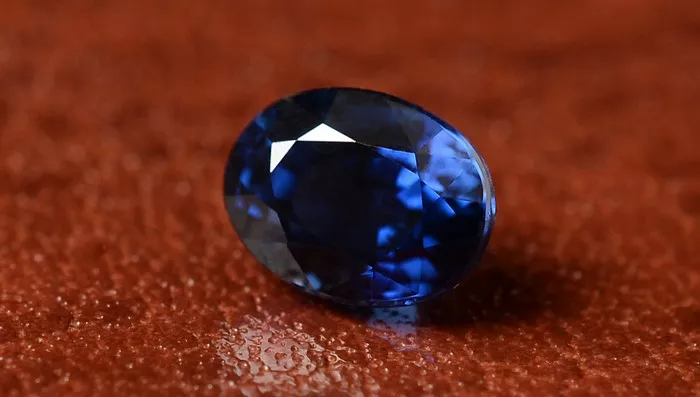Tanzanite, a gem known for its mesmerizing blue and violet hues, has captured the hearts of jewel enthusiasts and collectors worldwide. This precious gemstone’s allure lies not only in its stunning colors but also in its rarity, as it is found in only one place on Earth: Tanzania. This article delves into the qualities that make Tanzanite so special, examines whether different countries can claim the best Tanzanite, and provides insights into the global market for this beautiful gemstone.
The Unique Allure of Tanzanite
Discovered in 1967 by Maasai herders in the Mererani Hills of northern Tanzania, Tanzanite has rapidly gained prominence in the gemstone market. Its unique trichroism, which displays different colors when viewed from different angles, sets it apart from other gems. The captivating blue and violet tones, sometimes accentuated by flashes of burgundy, make Tanzanite a highly sought-after gemstone.
The Geological Origins
The Mererani Hills, located near Mount Kilimanjaro, are the only known source of Tanzanite. The unique geological conditions in this region, including intense heat and pressure over millions of years, created the perfect environment for Tanzanite to form. The mineral zoisite, which Tanzanite belongs to, underwent these specific conditions to transform into the vibrant gemstone we know today.
Evaluating the Quality of Tanzanite
The quality of Tanzanite is assessed based on several key factors, including color, clarity, cut, and carat weight. Understanding these criteria is essential for determining which country might offer the best Tanzanite, even though the stone itself is only found in Tanzania.
Color
Color is the most critical factor in determining Tanzanite’s value. The most prized Tanzanites exhibit a deep, rich blue with violet undertones, often referred to as “royal blue.” These stones are more valuable and sought after compared to lighter or less saturated colors. The gem’s trichroic nature means that the finest stones will show different colors—blue, violet, and burgundy—when viewed from different angles.
Clarity
Clarity refers to the presence of inclusions or internal flaws within the gemstone. High-quality Tanzanite is typically eye-clean, meaning it has no visible inclusions to the naked eye. Stones with fewer inclusions are more desirable and valuable.
Cut
The cut of Tanzanite affects its brilliance and overall appearance. A well-cut Tanzanite will maximize the gem’s color and light performance, enhancing its natural beauty. Skilled cutters aim to achieve the best possible proportions and symmetry to highlight the stone’s unique optical properties.
Carat Weight
While larger Tanzanite stones are rare and highly valued, the gem’s quality is not solely determined by its size. A smaller stone with exceptional color and clarity can be more valuable than a larger one with inferior qualities. However, large, high-quality Tanzanites are among the most sought-after in the market.
Tanzania: The Sole Source
Given that Tanzanite is only found in Tanzania, it might seem straightforward to conclude that Tanzania has the best Tanzanite. However, this assertion requires a more nuanced exploration.
Mining Conditions
The mining conditions in Tanzania significantly impact the quality and availability of Tanzanite. The Mererani Hills are divided into different mining blocks, each operated by various entities, including large mining companies and smaller artisanal miners. The mining methods and the level of expertise among these operators can affect the quality of the stones extracted.
Large-scale mining operations, such as those run by TanzaniteOne, utilize advanced technology and skilled labor to ensure a consistent supply of high-quality Tanzanite. These operations can produce stones that meet the highest industry standards for color, clarity, and cut. On the other hand, smaller artisanal miners may lack the resources to consistently extract top-quality stones, although they can still unearth remarkable gems.
Government Regulation
The Tanzanian government has implemented various regulations to manage and control the Tanzanite mining industry. These measures aim to ensure sustainable mining practices, protect the environment, and maximize the economic benefits for the country. By regulating the industry, the government helps maintain the quality of Tanzanite entering the market, reinforcing Tanzania’s position as the source of the world’s best Tanzanite.
The Global Market for Tanzanite
While Tanzania is the sole source of Tanzanite, the global market plays a crucial role in shaping perceptions of quality. International dealers, jewelers, and gemologists contribute to establishing the standards and reputation of Tanzanite.
Role of International Dealers
International dealers, particularly those based in gem trade hubs like New York, Hong Kong, and Bangkok, are instrumental in grading, certifying, and distributing Tanzanite globally. These dealers often work with gemological laboratories to assess and verify the quality of Tanzanite before it reaches consumers. Their expertise and reputation help maintain high standards for Tanzanite in the global market.
Gemological Laboratories
Gemological laboratories, such as the Gemological Institute of America (GIA) and the International Gemological Institute (IGI), provide certification and grading services for Tanzanite. These institutions use rigorous standards to evaluate the color, clarity, cut, and carat weight of Tanzanite, ensuring that consumers receive accurate and reliable information about their gemstones.
Consumer Preferences
Consumer preferences also influence the market for Tanzanite. High-end jewelers and luxury brands often seek out the finest Tanzanite for their exclusive collections, driving demand for top-quality stones. This demand encourages miners and dealers to prioritize the extraction and distribution of the best Tanzanite available.
Conclusion
In conclusion, Tanzania undeniably has the best Tanzanite, given that it is the only country where this precious gemstone is found. The combination of advanced mining practices, effective government regulation, and rigorous global standards ensures that the finest Tanzanite reaches the market. While challenges remain, the industry’s ongoing efforts to maintain high standards and promote Tanzanite’s unique allure bode well for its future.
As Tanzanite continues to captivate gem enthusiasts around the world, Tanzania’s role as the sole source of this exceptional gemstone remains central to its enduring appeal. By preserving the quality and integrity of Tanzanite, Tanzania solidifies its reputation as the home of the best Tanzanite in the world.


